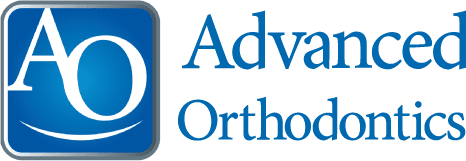After spending months or even years in braces or aligners, we know patients fully intend to use their retainers as directed once treatment is complete. But we also know how easy it can be to forget once some time has passed! Here at Advanced Orthodontics, we regularly see patients who have stopped wearing their retainer. Some aren’t even sure where it is! The smile they spent so much time straightening has begun to shift, and they want to know if there’s anything we can do to get it back on track again.
That’s where our expert team comes in! Dr. Nielson and Dr. White have years of experience working with orthodontic patients of all ages, including adults who are in need of minor touch-ups to treat a relapse. Let’s take a closer look at what causes these relapses to occur in the first place, and how orthodontics can help correct them!
What causes relapses?
It might be the most common culprit for an orthodontic relapse, but not wearing a retainer when you’re supposed to isn’t always to blame. Relapses can occur for a few other reasons, too, like:
Genetics and natural aging
As we age, our teeth will naturally begin to shift. The front teeth in particular can be affected by this, as the enamel also begins to wear thin the older we get.
Tooth loss
If one or more teeth have been lost due to decay or periodontal disease, the surrounding teeth will often drift towards that empty space. If this is left untreated over time, it can eventually lead to a misaligned bite.
Teeth grinding
If you grind your teeth, it places a strain on the teeth that can alter your bite and sometimes cause misalignment.
A reminder of why retainers are so important
To gain a better understanding of why retainers are such an essential part of achieving long-term success when it comes to your smile, it helps to know more about the straightening process itself.
Once the initial phase of treatment is complete, your braces will be removed or you will use your last aligner. We want your teeth to stay in place going forward, but we also need the gums and bones in your mouth to align to these new positions. Because they’re made up of soft and hard tissues, they can sometimes take a little longer to align. Wearing a retainer regularly helps the gums and bones align successfully, and will also further stabilize your bite.
If that sounds confusing, simply imagine each tooth being held in its socket by elastic ligaments that attach the roots to the bone. These ligaments are living tissue that are affected by the movement of the teeth. It’s this attachment that allows for the small movements the teeth make throughout treatment. An orthodontic appliance like braces or aligners introduce tension in and around the teeth, but once the remodeling is complete, the tissues, ligaments, and bone will need time to stabilize.
Enter your retainer! Without that continued tension, the teeth will almost always migrate back to their old positions. A retainer adds the stability and tension your teeth need to stay in place.
Treating orthodontic relapses
It can be upsetting to see your teeth shifting for any reason, but we’re here to help! If you’ve been wearing your retainer as directed and there’s only a bit of minor shifting present, we may be able to leave things as they are and just monitor your teeth for any further shifting. Minor movement of this kind can also be corrected by having new retainers made.
If you’ve suffered a significant relapse, however, we may recommend re-treatment with braces or aligners. Fortunately, correcting a relapse often takes much less time than your original treatment! We offer the following options to patients looking to straighten their smile again (and improve their oral health in the process!)
Traditional metal braces
Metal braces are one of the most effective tools we have for correcting misaligned teeth. They’re composed of medical-grade alloys such as stainless steel and nickel, and work relatively quickly at closing gaps and aligning teeth. Depending on when you had your original treatment, you may find that the newer braces are far more comfortable, subtle, and stylish than ever before. The overall strength, durability, and affordability that braces provide keep them at the top of the treatment list year after year.
Ceramic braces
Ceramic braces offer the same strength and reliability of traditional metal braces, but come with semi-translucent or tooth-colored ceramic brackets to blend in well with your natural smile. They can be an excellent option for patients looking for a more subtle way to straighten their smile! The brackets are about the same size and shape as metal braces, but much less noticeable, and when they are paired with clear, white, or tooth-colored wires and elastic ties, they’re incredibly discreet.
Invisalign clear aligner system
Unlike braces, Invisalign uses a series of custom-made aligners to gradually straighten your teeth. These trays are completely clear, smooth, and removable. This allows patients an extra measure of freedom and flexibility braces just can’t match. There is no irritation from wires or brackets, no food restrictions, and the aligners are removed to eat, drink, and maintain your regular dental hygiene routine. The Invisalign system works particularly well for mild and moderate orthodontic issues, like those often experienced with relapses.
Get your smile back on track with Advanced Orthodontics
Whatever the reason for your orthodontic relapse, we can turn your frown upside down! Making the choice to touch-up your past orthodontic treatment will give you the smile you’ve been missing, and can even improve your oral health. If you’re ready to take the first step towards reclaiming your beautiful smile, get in touch with us today to schedule a FREE consultation!




